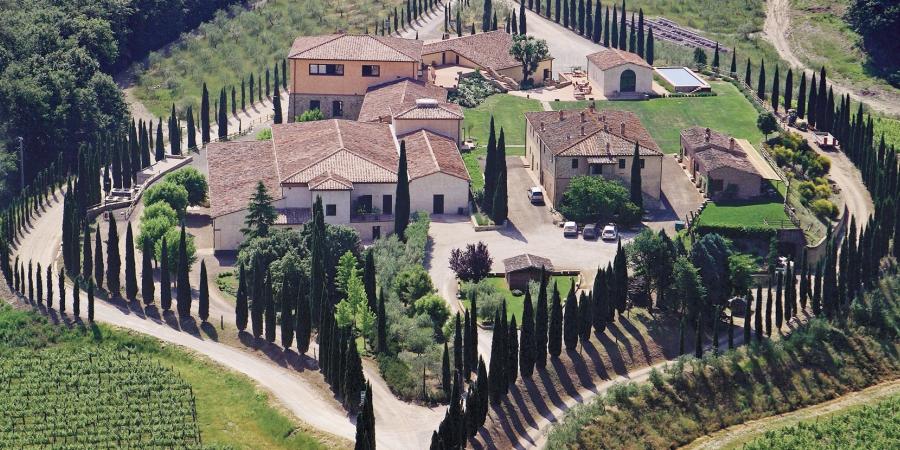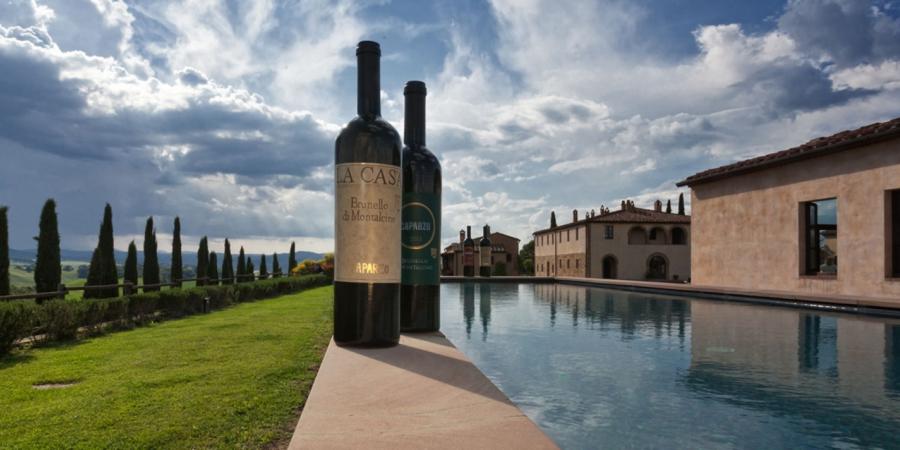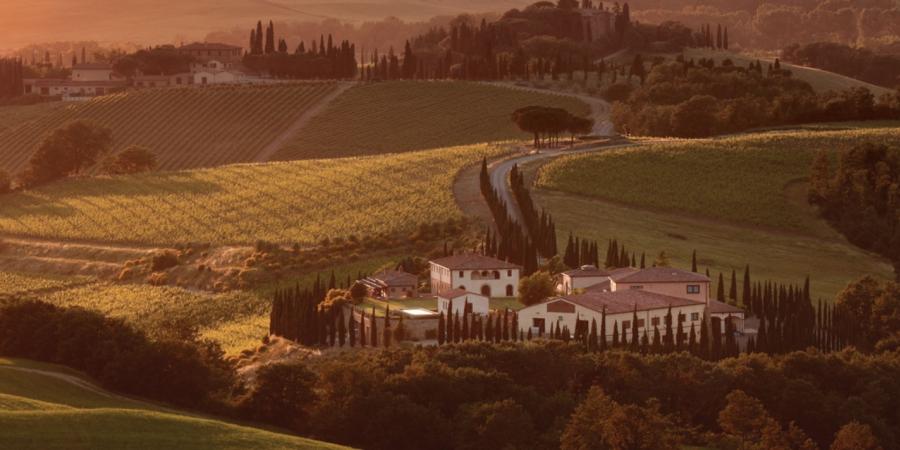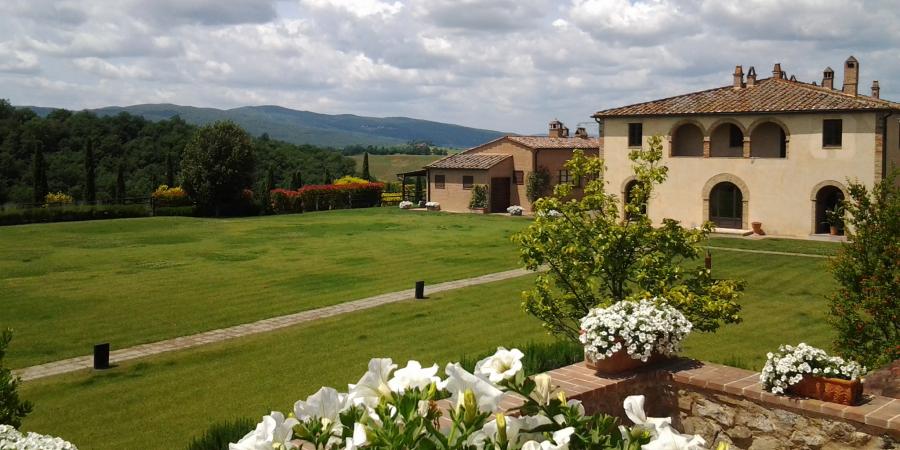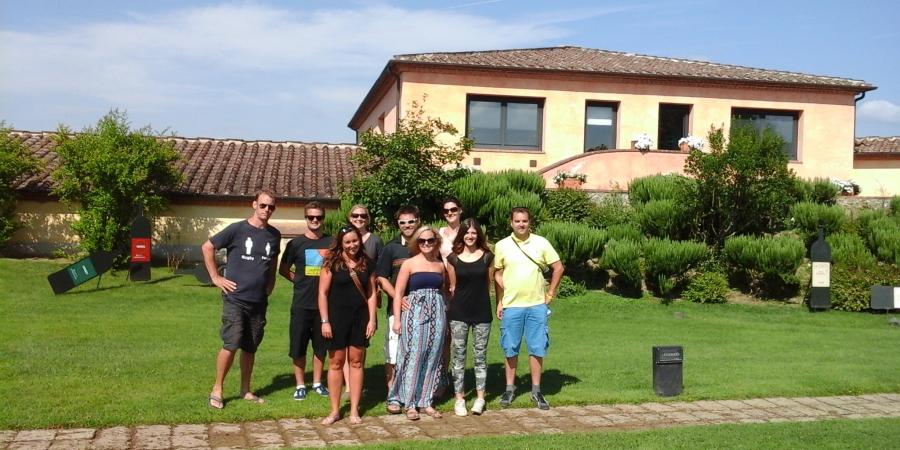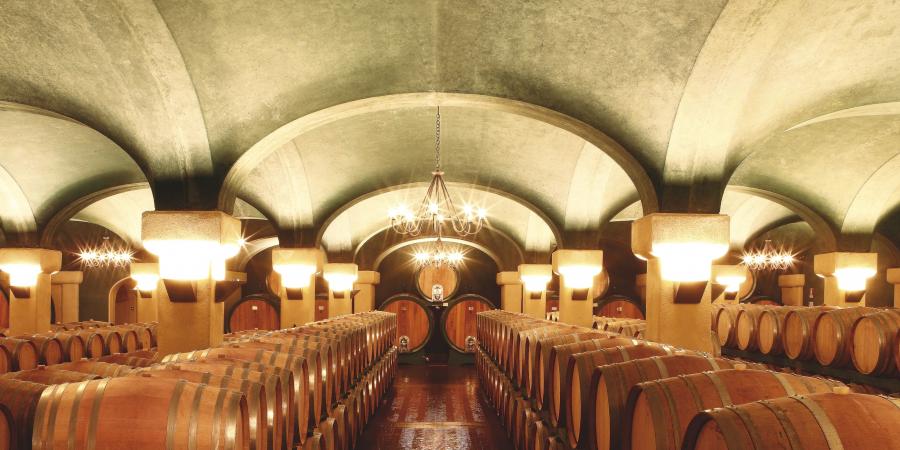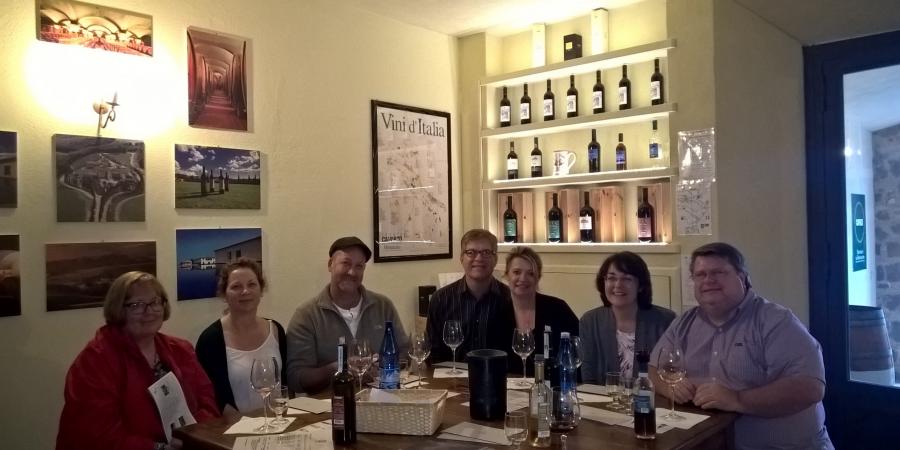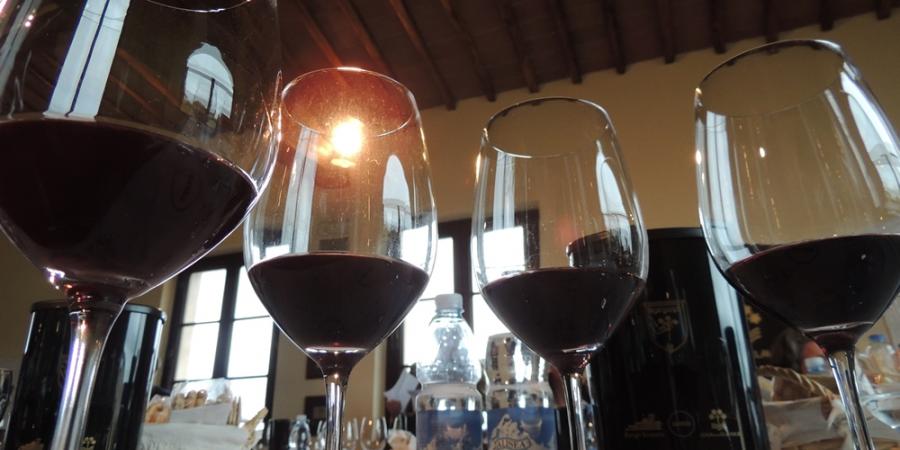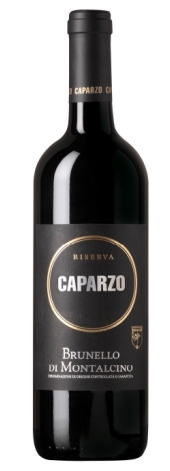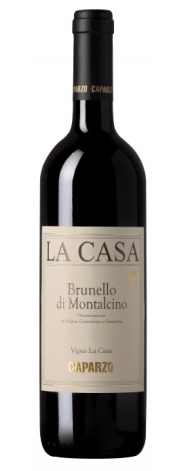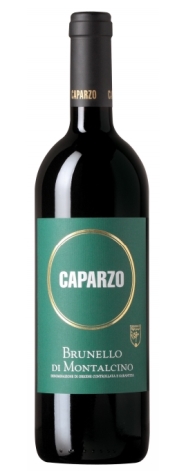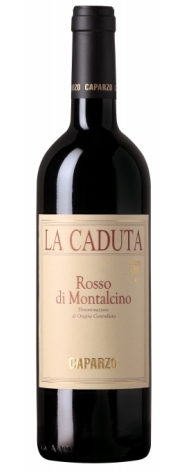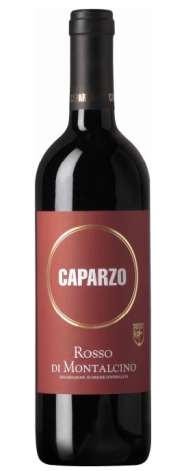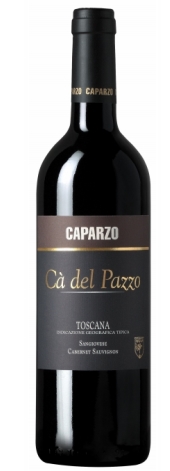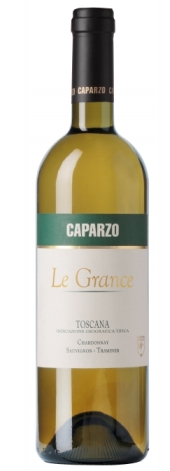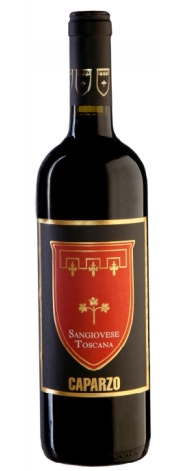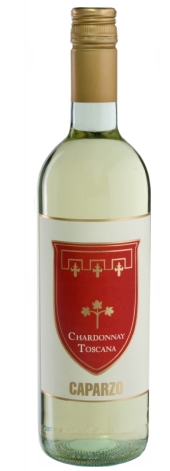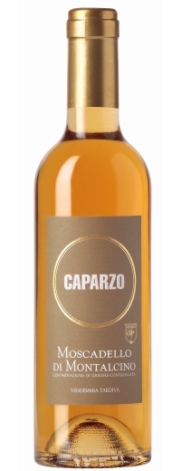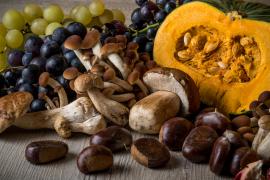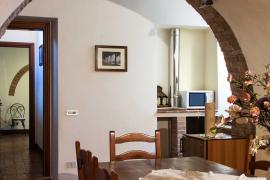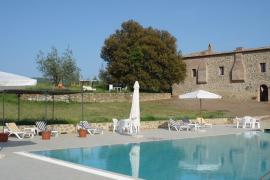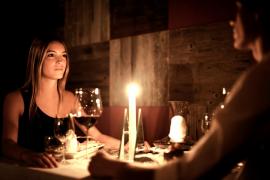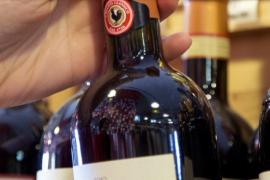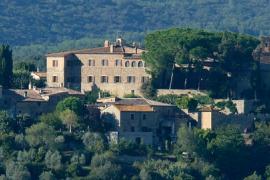Caparzo is one of the most prestigious and popular estates in Montalcino for quality and special style of his wine.
Caparzo has been the first estate understanding the influences of the “terroir” on the characteristics of the wines. From this concept, it began making Brunello di Montalcino Vigna “La Casa”, Rosso di Montalcino Vigna “La Caduta”. Ca del Pazzo (Sangiovese/Cabernet sauvignon) and Le Grance Chardonnay, (Sauvignon Blanc and Traminer) are also very much appreciated. Caparzo also produces some Igt Toscana wines: Rosso, Bianco and Sangiovese. The production also includes: Moscadello di Montalcino Vendemmia tardiva, Grappa di Brunello and Grappa di Riserva
The origins of the place name Caparzo are still unknown. According to some people, the name should derive, as shown by ancient maps, from Ca’ Pazzo; according to others, the term should derive from the Latin Caput Arsum and should indicate a “place touched by the sun”. The beginning of the history of Caparzo dates back to the end of the sixties, when a group of friends, fond of Tuscany and of wine, purchased an old ruin with vineyards at Montalcino. We are at the dawning of Brunello di Montalcino, the Association has just been set up and the producers-bottlers are only 13. The farm estate was renovated, modernised and new vineyards were planted. In a short time, Caparzo was able to impose itself on the market of Brunello. Thirty years passed from the first rows of vines and from the first cellar experiences. In 1998, the farm estate came to a turning point when ElisabettaGnudiAngelini purchased Caparzo. She immediately carried out her objectives: combine tradition with innovation to create a high-quality wine, expression of an excellent territory, with the help of her son, Igino, and daughter, Alessandra.
Caparzo covers an overall surface of 200 hectares including ca. 90 covered by vineyards, distributed on different hillsides of the borough of Montalcino, in the best areas of D.O.C.G. Caparzo, La Casa, La Caduta, Il Cassero and San PieroCaselle are located on a hilly area at a height ranging from 220 to 300 meters above sea level.
The capacity of the wine-making cellar exceeds 10,000 hectolitres. Fermentation takes place in stainless steel vats designed by us to support the traditional operations of temperature control, pumpover, délestage, pigeage and aeration by means of a computerised system. Here, wine technology is completely at the service of the manual ability of man. The capacity of the ageing cellar is ca. 6,000 hectolitres. The type of woods used varies according to the type of wine.
